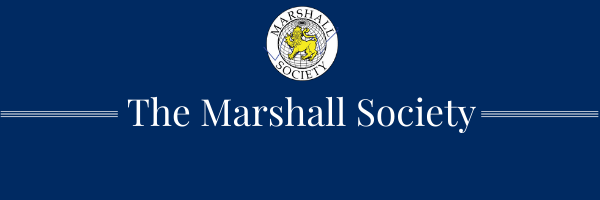Economic Surplus: Summer Holidays 3

Economic Surplus by The Marshall Society
"A Society can be Pareto optimal and still perfectly disgusting." ― Amartya Sen
Welcome to the Economic Surplus, the newsletter brought to you by the Marshall Society! We are the University of Cambridge's flagship economics society. Every week, we bring you our bespoke commentary on economic trends, updates on our exclusive members' events as well as a summary of the headlines you can't ignore! You've probably received this email because you were previously subscribed to the Marshall Society's old email list, but if you have been forwarded this by a friend, feel free to subscribe here!
Marshall's Thoughts:
This week’s Marshall’s Thoughts are written by Trevor Chow.
Last week, we talked about the inflationary risks which may come when we run an economy hot and provide economic relief. But just how substantial are those risks in the US? The recent Jackson Hole Economic Symposium has given us some answers.
The annual conference at Jackson Hole is a hotbed for macroeconomic news, and the Chair of the Federal Reserve usually gives a speech there. At last year's event, Chair Jerome Powell announced that the Fed would adopt a strategy of flexible average inflation targeting. That means they would aim for the Personal Consumption Expenditures Price Index to rise by 2% annually on average, while still giving themselves flexibility to accomodate temporarily higher inflation.
While that much is straightforward, he was clear that they were "not tying [themselves] to a particular mathematical formula that defines the average". So it remains unclear what on average means exactly - however, a reasonable approximation is to look at how the PCE Index has changed since the start of 2020.
It is obvious that we have exceeded the path implied by the 2% target. However, this shouldn't raise alarm bells just yet, as long as it represents transitory supply-side bottlenecks as opposed to the Fed becoming too dovish and expansionary. This is exactly what Chair Powell argued in his Jackson Hole speech this year, positing that most of the inflation so far has come from "a relatively narrow group of goods and services" for which the production constraints are likely to abate over time.
But perhaps the most useful indicator is what people anticipate inflation to be in the future. If these remain well-anchored at around 2%, then the risks of inflation spiralling out of control are low. One way to derive a measure of inflation expectations is to look at the difference between the interest rate paid on US Treasury securities and the interest rate paid on US Treasury Inflation-Protected securities (TIPS).
For technical reasons relating to the pricing of risk, this breakeven inflation rate overestimates inflation, but the Cleveland Fed produces an adjusted TIPS measure. Right now, market participants expect Consumer Price Index inflation (which is usually slightly higher than PCE Inflation) to average 1.58% over the next decade. So as long as this remains stable, there's no need to panic about a return to the inflation episodes of the 1970s just yet!
Sources: figures produced by Trevor Chow using Federal Reserve Economic Data; inflation expectations from the Cleveland Fed.
In Case You Missed It:
El Salvador's world-first adoption of bitcoin hits snags | Reuters - As the first country in the world to adopt bitcoin as a legally accepted medium of exchange, El Salvador has run into technical issues with its government app, as well as having its sovereign holdings of bitcoin fall in value.
Boris Johnson unveils £12bn annual tax rise for health and social care | Financial Times - Boris Johnson broke two key guarantees from his 2019 election manifesto: he announced a 1.25 percentage point increase in National Insurance Contributions, and separately, suspended for one year the triple lock for pensions. He stated that these were necessary measures to deal with the strain of the pandemic on public finances, adding that "a global pandemic was in no one’s manifesto".
The new economics of global cities | The Economist - Before the pandemic, cities were on the rise. But the pandemic has reversed this trend, with many who left urban areas still having not returned. An "exodus index" constructed by the Economist suggests that suburban areas are experiencing a lot more economic and social activity, with city centres remaining quieter than usual.
Intended and Unintended Effects of E-cigarette Taxes on Youth Tobacco Use | National Bureau of Economic Research - A new working paper suggests that state and local taxes on e-cigarettes has worked in reducing their consumption among the youth. However, they may have substituted towards using cigarettes, and the net effect on public health may be mixed at best.
That's it from us for now!
The Marshall Society